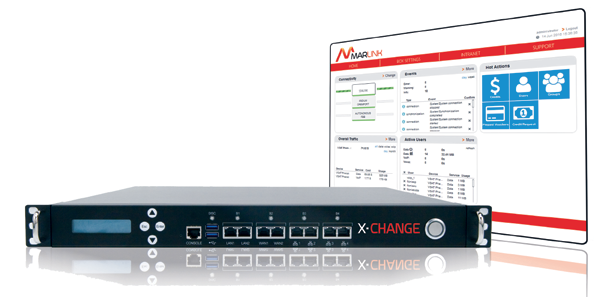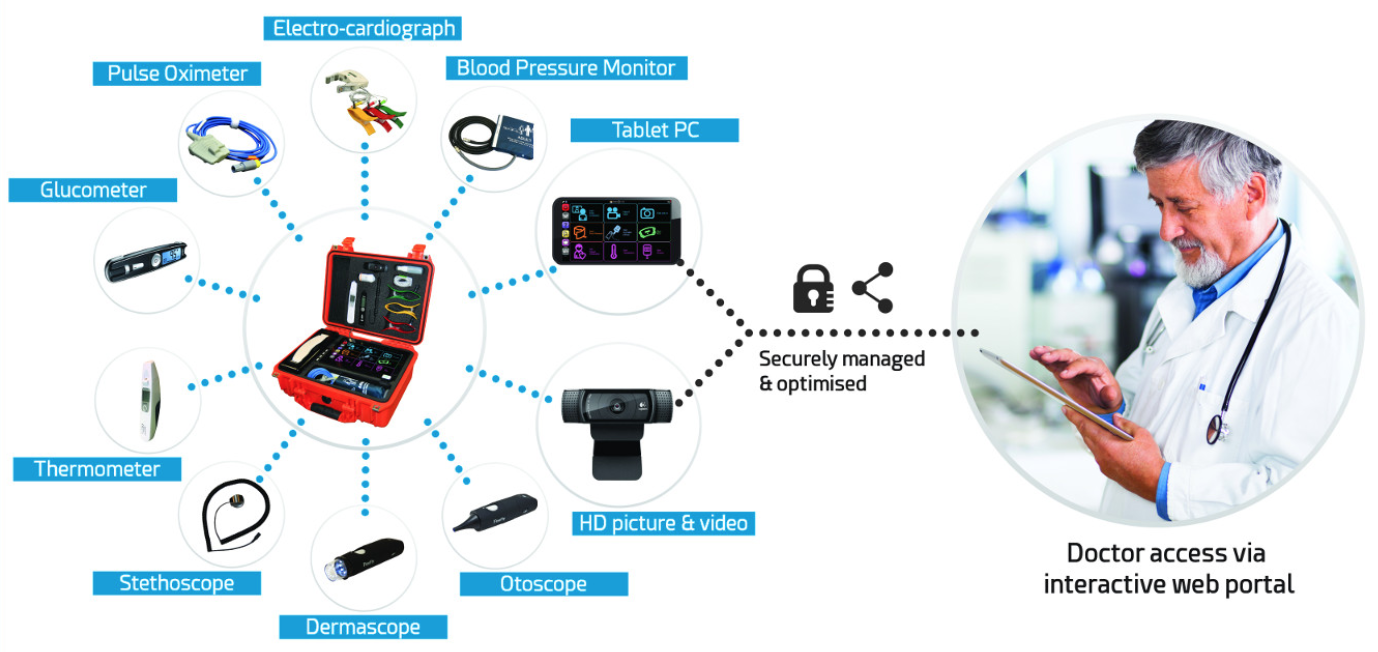Video streaming — even at 4K Ultra High Definition — is today a pretty straightforward, low-cost and usually seamless affair at home or in the office.

Getting video to and from a ship in the middle of the ocean is more of a challenge. However, as more satellite capacity becomes available across the globe, speeds increase and prices decrease and demand for live streaming and content distribution at sea is growing. It’s now perfectly feasible to reliably deliver Standard Definition (SD) and Full High Definition (HD) video almost anywhere on the oceans.
More video over a ship or fleet’s communication network does introduce a certain element of risk if the rollout is not managed properly. Losing access to digital safety and efficiency focused applications on board because the latest season of the Crown has just released is not an ideal situation for anyone. Flexible and dynamic service management can mitigate the problem, ensuring that the bandwidth used on any video connection is optimized and does not affect the availability of other critical applications on the same network.
Health & Safety
Marlink’s XChange centralized communications management system is the center point for a new wave of maritime video applications helping to support business, crews and in a wider context, improving society’s understanding of the oceans.
The most significant advances enabled by live video at sea is the improved health of crew and passengers at sea. Live, face-to-face contact with medical professionals on shore over a real-time video link can aid in the treatment and recovery of sick or injured patients on board. Delivering a complete solution for easy, reliable and global operation is essential though, in order to persuade shipowners and managers that telemedicine is financially and practically viable.

Using XChange, Marlink offers an innovative telemedicine service designed to improve the health and safety of crew and passengers at sea, while meeting new ILO/MLC and IMO/STCW labor regulations for health and medical treatment on board. It provides a cost-effective way for shipping companies to manage both regular and emergency medical consultations on board, thereby supporting the medical health of seafarers and passengers, and reducing the risk of spiraling costs incurred due to medical emergencies on board.
XChange Telemed is the only turnkey, fully integrated telemedicine system available, with everything delivered and managed by Marlink. The solution integrates a reinforced, vibration-proof hard-case with CE certified medical equipment for on board diagnostics by designated medical crew, an intuitive touch-screen user interface and High Definition (HD) video camera, all of which seamlessly link with XChange and Marlink VSAT services to provide a direct live video and secure data connection to doctors on shore.
With XChange Telemed, medical diagnostic data taken from the medical instruments on board can be viewed remotely alongside the patient’s own medical file in the online and secure web portal, ensuring the remote doctor has access to all pertinent information about the specific illness or injury, in addition to the patient’s medical history during video consultations.
This data adds significant value for the live consultation, where the professional ashore can support both the patient and medical officer to treat the issue correctly. The system also allows for the transmission on video and stills prior to or instead of a live consultation.
Platform for Remote Consultations
The system has been adopted by a number of major vessel operators.
 Marlink’s XChange Telemed Service.
Marlink’s XChange Telemed Service.
Most recently, Genavir, the vessel operating arm of the French Research Institute for Exploitation of the Sea (a.k.a. Ifremer: wwz.ifremer.fr/en/The-Institute) started using XChange Telemed, to minimize the impact of illness and injury on five ocean-going research vessels; Alis, Antea, L’Atalante, Pourquoi Pas? & Thalassa. All are part of the French Oceanographic Fleet and are connected using a customized VSAT service from Marlink. Now with XChange Telemed fully integrated, crew and scientists aboard benefit from a highly reliable direct link to medical experts on shore, should they fall ill or suffer an injury.
Remote medical assistance is especially important for research vessels. In Genavir’s case, the ships are often chartered and deployed for two to three months at sea on a scientific mission without a port call. Previously, any serious medical conditions or injuries on board could entail a return to port, resulting in a premature end to the scientific mission. By providing a high quality live video and data link to medical experts on shore, XChange Telemed can help to mitigate the need for returning to port for medical reasons, and contribute to the comfort, wellbeing and recovery of the patient while the vessel remains at sea.
Considering the public funding nature of many scientific missions, remaining at sea for the full duration is the only way to complete the planned research, as financial challenges would normally rule out restarting the project. Genavir selected XChange Telemed to avoid these circumstances and enable its vessel charterers to maximize their investment and time at sea.
Through integration with Marlink’s VSAT service, XChange Telemed sessions are bandwidth prioritized to ensure high availability of service for connecting with medical staff ashore. This integration of application and network allows for greater control and optimization of the link on ship and ashore, ensuring fast data connectivity and best quality video, audio and HD images.
Providing the flexibility to integrate XChange Telemed into their existing welfare programs, for the first time in a maritime telemedicine service, customers can choose between utilizing remote medical assistance from compatible public Telemedical Maritime Assistance Service (TMAS) centers, or an appointed doctor or a private medical organization. This adds flexibility and is especially important for charterers who may already have existing medical support agreements in place.

The Temesis vessel crossing the equator
with Linie Aquavit aboard.
“By combining live data from the on board medical kit and patient file with a live video link, XChange Telemed enables professional support from shore for trained medical personnel on board,” said Pierre Aldebert, QHSE Manager, Genavir. “It will help to diagnose conditions and develop treatments for crew members and scientists, which may enable our ships to remain at sea and complete their mission in the event of illness or injury.”
Enabling Scientific Collaboration
Genavir’s research vessels have been enjoying the high bandwidth provided by Marlink’s VSAT services for six years. Using a customized configuration, it provides the speed and capacity needed for collaboration with colleagues on shore and the transfer of research data, in addition to flexibility that can accommodate special projects, such as the 2014 Night of the Abyss event.
For this educational event, Marlink was tasked with temporarily boosting bandwidth for a short period, enabling Ifremer scientists to conduct a live video broadcast and conference from the ‘Pourquoi pas?’ research ship located in the
mid-Atlantic.
In addition to live video of presentations by scientists on board, the increased bandwidth also enabled a live stream of footage from an underwater ROV (Remotely Operated Vehicle).
This type of videoconferencing is also referred to as telepresence. It uses satellite connectivity solutions as a means of transmitting real-time HD video feeds from subsea vessels’ data sensors, thereby enabling data-centric videoconferencing between ship and shoreside teams.
Telepresence was used in December of 2018 when another scientific research vessel requested a bandwidth boost from Marlink for the seamless transmission of live, mission-critical HD video of ocean mapping operations, in front of a shore-based audience of nearly 1,00 professionals.
Scientific procedures of this nature would previously have been conducted from the vessel itself, but as telepresence allows such assignments to be remotely controlled and operated by any number of teams from shore, the reduction of the ecological footprint is also considerable.
In one week alone, the research team was able to share daily research data from five separate dives with multiple shore teams. The campaign showed just how telepresence functionality will allow ever-greater numbers of scientists and students to manage and direct ROV dives in real-time collaboration from their respective laboratories, mitigating the problem of limited passenger space on board research ships and reducing the need for physical travel.
Enjoying ‘Slow TV’
While the following customer project may not be the most serious development in history, it does demonstrate the resilience that SATCOM can provide for video transmission globally.
Currently, Marlink VSAT is proving integral to the success of a unique ‘slow TV’ experiment spanning four months and two equatorial crossings. For the purposes of the exercise, Marlink’s brief was simple: to enable unbroken live streaming of the Wallenius Wilhelmsen vessel Tamesis on a four month sea voyage from Bremerhaven in Germany to Australia and back again, taking in stopovers in Germany, Holland, the UK, the USA, Mexico, New Zealand, Singapore, China and Japan en route.
Tamesis already benefits from a Marlink VSAT solution, but in order to achieve the high upload speeds required to produce consistent live footage over such an extended distance and duration, Marlink has allocated a temporary bandwidth upgrade to the vessel, adjusting its existing hardware setup, ensuring no additional hardware was required.
The spur for the project came from Arcus, the world’s largest producer of Linie Aquavit, a celebrated Norwegian beverage dating back to the early 19th century. The drink derives its name from a tradition whereby oak barrels of Aquavit are routinely transported on boats from Norway to Australia and back again, thereby crossing the equator (‘linje’ in Norwegian) twice before being bottled.
Aquavit’s makers have always maintained that the incessant motion, high humidity and wildly varying temperatures encountered by ships on this 2,880-hour passage are all major contributory factors to the drink’s accelerated maturation and eventual taste.
Arcus approached Marlink to assist in proving the importance of the actual voyage for the taste of the aquavit — hence the absorbing live stream, which can be accessed at linie.com/live/.
A camera provides a clear, sharp view of Tamesis’ cargo deck, with the relevant containers aboard: and while leveraging the calming nature of the recent Norwegian phenomenon of ‘slow TV’, the real-time coverage has already captured some stirring sights since the vessel left Bremerhaven late 2018 — not least a heavy snow storm in the Atlantic.
While this endeavor is about ‘slow TV,’ contrastingly high upload speeds are required and the quality of the live stream is a testimony to the effectiveness and flexibility of Marlink’s global VSAT delivery.
www.marlink.com

